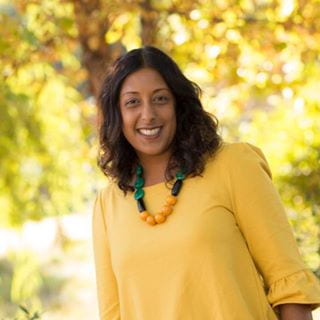Engaging Imagination to Develop a School Leadership Network that Includes a Pedagogy of Care – imaginED
 By Myra Quadros-Meis, Ed.D (Administrator in San Francisco Unified University District)
By Myra Quadros-Meis, Ed.D (Administrator in San Francisco Unified University District)
University management can be lonely and isolating. Your colleagues are other administrators who are also chaotic so you do not want to load them with your queries or fears. Typically, leadership conferences are whole of logistics with little time to community a great deal fewer be in collaboration with peers.
At the beginning of the 2018-19 college calendar year, the superintendent of San Francisco Unified College District (SFUSD) determined twenty universities that historically or persistently underserved Black pupils as indicated on proficiency metrics of standardized exams (California School Dashboard, 2018). The district labeled the educational institutions and activated a procedure for addressing the identified deficiencies by a mandate.
More than the training course of two many years, I worked aspect-by-aspect with four center school leaders from the SFUSD as activist co-researchers. With the intention of addressing the district mandate and aiding these leaders in increasing academic and social-psychological outcomes for Black pupils, we engaged in an imaginative, collaborative PAR project targeted on social justice improve (hunter et al., 2013). Our imaginations were being activated as we engaged in particular narratives. We shared stories about our journey lines to management and opened up about our vulnerabilities in leading schools. A few cycles of inquiry about eighteen months afforded us time to decide how an fairness-centered experienced understanding group (EC-PLC) could thoroughly interact in artistic dialogue to address the substantial difficulties that College students of Colour faced in the four middle colleges.
Our imaginations have been activated as we engaged in personal narratives.
Right before we started our to start with cycle of inquiry we put in casual time jointly that I refer to as a pre-cycle. This pre-cycle is what grounded us as a community that finally pushed us in the direction of transformative social justice management (Shields, 2010). The university leaders appreciated the care taken to set up and manage our professional mastering house and coaching marriage. In my study I call this concept, “Pedagogy of Treatment.” I consider the concepts from Pedagogy of Care furnished an natural environment wherever the university leaders could start off to be their genuine selves and interact in imaginative top the capacity to direct exterior of the regular techniques of schooling. They turned open to getting in solidarity with underrepresented university student and family teams.

Characteristics of Pedagogy of Care
- Sources are generally constrained in the schooling placing, especially for leadership specialist advancement. In the review, two resources contributed to the pedagogy of care in our operate with each other: time and food. A school leader’s time is just one of the most worthwhile sources, and there is by no means ample of it (Theoharis, 2009). Their motivation was obvious by how they manufactured time in their schedules to show up at specialist finding out collectively. As fast paced school leaders, they prioritized the administrative community and communicated how a lot they valued the time to be with colleagues grappling with identical troubles. Consuming alongside one another was an crucial ritual, a time to split limitations across dissimilarities and lessen the formality of the experienced partnership. Starting up with our initially conference, each treats throughout EC-PLC time and sharing a communal meal afterward were being the norm.
- The actual physical setting to engage in the EC-PLC do the job was a precedence for the crew. Initially, we satisfied at the finish of the school day so there would be confined interruptions. In the very first cycle, we fulfilled both equally at a school website and at my residence. The university leaders asked for to meet in a location diverse from a faculty web site mid-cycle, so we resolved to forever alter the conference site to my property. Switching the locale offered an unpredicted degree of consolation and safety where by genuine, engaging discussions could exist by way of storytelling and connection. The change in room gave us the capability to expand our imaginations beyond what the partitions of classic university allows.
- An significant aspect of my do the job with the school leaders was to learn their faculty context in order to help them in the district mandate and their management growth. In what I termed, inclusive pedagogy, our coaching time offered invaluable opportunities for me to construct trust with each and every leader and with other members of the school group, to enable me recognize the context of their faculty cases, and to replicate with them on their management choices. The have faith in that formulated affirmed a caring marriage and supported their convenience in participating their creativity and inviting some others to visualize with them.
- As section of the lifestyle of caring that I was striving to cultivate with the school leaders, I persistently delivered wellness checks. I would regularly prevent by their offices unscheduled to say hello and see how they ended up undertaking. A lot of of the relaxed discussions led to additional in-depth conversations exactly where faculty leaders exchanged personalized tales and emotions, such as anxieties. I assisted each and every leader, as necessary, on this sort of jobs as guiding their reaction to a district business, creating an agenda, supporting classroom walkthroughs, or attending a conference with them.

Imaginative leaders do not get the job done in silos. They need to have a community of like-minded colleagues and will have to experience a pedagogy of care in order to go away from transactional leadership to much more social justice transformative management. Time, area, basic safety, and have faith in help us to join, engage our imaginations, and share our tales in means that cultivate a courageous space for us to be susceptible and more assured to acquire threats in our conclusion generating (Arao & Clemens, 2013)
References
Arao, B., & Clemens, K. (2013). From safe spaces to brave areas: A new way to frame dialogue around variety and social justice. In L. Landreman (Ed.), The artwork of efficient facilitation: Reflections from social justice educators (pp. 135-150). Stylus Publishing.
California University Dashboard. (2018). SFUSD [Academic performance and academic engagement] https://www.caschooldashboard.org/stories/38684780000000/2018
hunter, L., Emerald, E., & Martin, G. (2013). Participatory activist research in the globalized globe. Springer.
Shields, C. M. (2010). Transformative leadership: Doing work for equity in numerous
contexts. Academic Administration Quarterly, 46(4), 558-589.
Theoharis, G. (2009). The school leaders our little ones have earned: 7 keys to fairness, social justice, and school reform. Academics Faculty Press.

